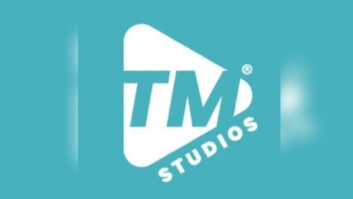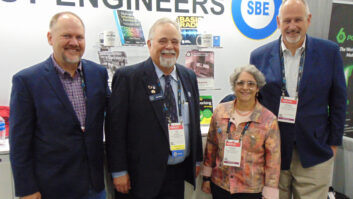NEW YORK — Westwood One is the official radio broadcaster for the 2018 PyeongChang Olympic Games. Ahead of the opening ceremony, Director of Broadcast Engineering and IT Zachary Akey told Radio magazine about the broadcaster’s team and setup that will ensure listeners don’t miss a second of the icy action in South Korea.
This is Akey’s fourth time working the Olympics. Also on site in PyeongChang is engineer Leslie Kveton, for whom this will be her first of many Olympic experiences, according to Akey. Back home in the US, Vice President of Engineering Bob Mack and SVP of Broadcast Engineering/Network Operations Eric Wiler will also provide support.
The broadcaster’s radio facilities in PyeongChange include three acoustically isolated studios: longform, shortform and an announce booth. Each studio has an associated control room, with one large acoustically isolated control room for longform programming. They also have a bullpen for scores, read-in, meetings and charging portable devices. In addition, there is a dedicated engineering space for racks and engineer work stations.
Aside from the usual challenges, Akey said that Westwood One is prepared for the “possibility of a cyber-attack from North Korea on South Korean telecom infrastructure,” a threat which he called “very real” and noted that the incident is not without precedent.
With that in mind, Akey says they will transition to satellite if necessary; they opted for “a BGAN [global] satellite internet unit and companion Comrex Access NX codec as well as an Iridium 9575 Extreme satellite phone system” and a Layer 2 IP connection back to the US, where they would jump on the “company’s broadcast-only MPLS” for this back-up plan. In fact, Akey said all IP-based transmission uses Comrex’s “CrossLock” technology which uses redundant IP paths through public internet and private MPLS networks.
Also, Akey explained, “We are always recording audio on each venue return as a backup.” To do so, he will use eight-channel BSI Skimmers with AudioScience sound cards.
For commentary positions at the venue, they will have five that are fiber-based and four internet-based, all hardwired. Real-time venue sound effects will be via Olympic Broadcast Services’ MADI channels DX 1–20.
Westwood One set up 10 unique mono bidirectional channels to the broadcast center in New York using five units, and two unique stereo bidirectional channels to Korea-based portable codecs (two units).
In terms of other elements of the phone setup, they have a US-based multiline phone system (just dial “9” to call out), as well analog hybrids for phone interviews back at the International Broadcast Center.
Intercoms will consist of three New York-Korea content-based coordination channels and one New York-Korea producer party line, plus one New York-Korea engineering party line.
Also in the mix are one ISDN unit and line for affiliate hits and utility use, an NAS for shared network drives and 20 KT Corp. Huawei Aircards and four KT Huawei MiFi portables.
What other gear did Akey bring for this adventure? As in past Olympic productions, much of the infrastructure is based on Sierra Automation platforms. He chose SAS 32KD, RioLink routers, Rubicon SL and Rubi-T consoles, as well as SAS ICM-32 intercoms, CPM-80 and CP-16A control panels and MultiPanel EX software. Also along for the ride are six Comrex BRIC Link IIs, one Comrex Access Rack IP codec, four Comrex Access Portable 2USB IP codecs and one Comrex Access NX portable IP codec. He went with Wheatstone M2 mic preamps; Sennheiser HMD 26-II headsets, Shure SM58, Electro-Voice RE20 and Sennheiser MD 46 microphones; Sony MDR7506 headphones; Genelec and Fostex speakers; plus Focusrite Scarlett 2i2 USB audio interfaces. They will also rely on an ESE master clock; SSL Alpha-Link Live-R, and SSL Alpha-Link MADI AX multichannel audio converters; Symetrix AirTools profanity delays; Telos Hx1 hybrids; and several Cisco routers and switches. Additionally, they have three Furman AR-Pro AC line voltage regulators and one Furman F1500-UPS with a BATT1500-EXT. battery pack. Finally, they brought Henry Engineering MultiPort interconnect panels and Wohler and Dorrough level meters.












